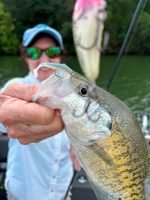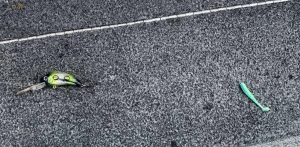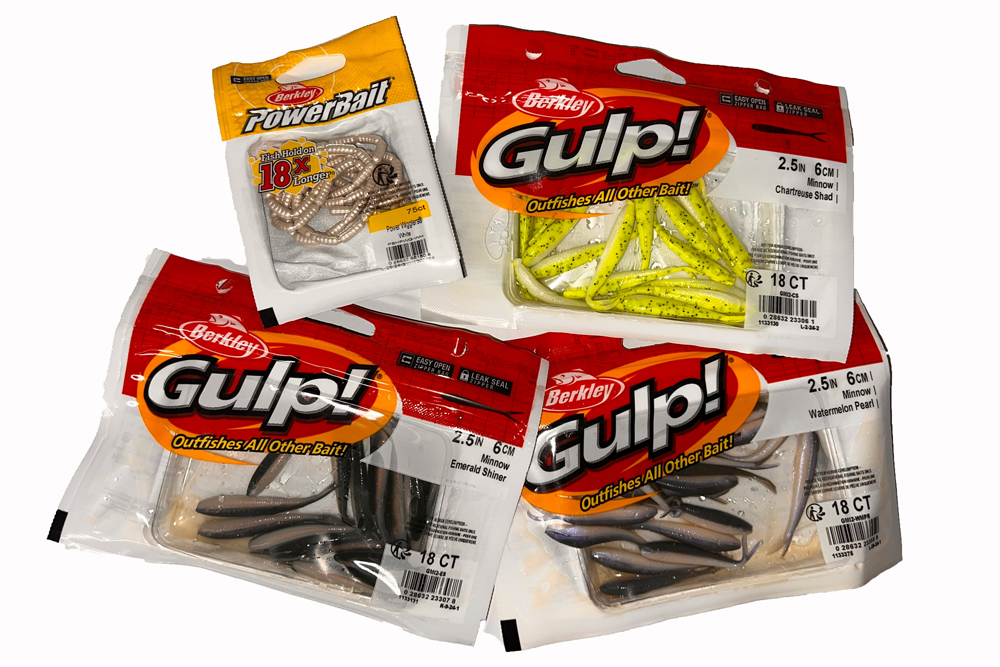Berkley Gulp or Powerbait is a great option for the unique technique Capt. Scott Lillie uses – rigging unweighted jigs on a plain hook, 12-to-18 inches behind the crankbaits he is trolling for summertime crappie. Capt. Lillie believes adding trailers to his crankbaits has increased his catch rates dramatically. (Photo: Richard Simms, CrappieNOW Editor)
Trailers on Crankbaits, Who Knew?
by Richard Simms, CrappieNOW Editor
Most year-round crappie anglers know a great hot weather/hot water technique is to troll crankbaits deep down in the water column. That’s where crappie find cooler water temperatures and more oxygen when surface water temperatures climb above 80 degrees.

Capt. Scott Lillie, a guide with Scenic City Fishing Charters on the Tennessee River, takes advantage of the technique to fill livewells with crappie, and other species, for his clients. But he uses one additional tidbit that he says increases his catch rate significantly.
“I’ve started rigging jig trailers to run behind all my trolled crankbaits,” he said. “I do believe it has increased my catch rate dramatically.
“My preferred crankbait is a #5 Walleye Nation Creations Boogie Shad,” said Capt. Lillie. “However, I attach an 18-inch piece of 6-pound fluorocarbon leader directly to the back hook using an improved clinch knot. I attach a plain live bait hook, #6 or #8, rigged with the jig. This weightless jig provides the perfect profile to not disrupt the action of the crankbait and Tennessee River crappie love them. On most days the trailer is responsible for as many as 80 percent of the fish boated.”
He says depth control is crucial, and it changes based on current, weather, and water conditions.
“When conditions remain stable, the depth may stay consistent,” Capt. Lillie said. “But the depth pattern is a moving target, and I run lures shallower and deeper to remain connected to this often-changing productive depth.”
He uses Offshore Tackle planer boards, plus an Offshore Tackle diving planer called a Tadpole, attached to his line to maintain precise depth control. Complimented with size of line, length of line behind the boat and trolling speed, he calculates the precise depth that each crankbait is running.
“Planer boards enable me to place lures further from the boat because crappie get boat shy in clear water,” he said. “It makes a noticeable difference.”
He runs four rigs off each side of the boat, using different lengths of rods to help position the lures properly, employing 10-pound-test line and line counter reels.

“Line counter reels provide me the ability for miniscule adjustments to my depth presentation,” he said. “I never troll far in a straight line, I’ll make turns to check whether the inside or outside rigs are more productive,” he said. “The inside rigs slow down, and outside rigs speed up, during turns helping me adjust speed control.”
Capt. Lillie says he routinely trolls at 1.5-to-1.7 mph. He says crappie seem to hit the crankbaits best during the peak, morning or evening feeding times, however, “Midday, when the bite slows down, almost all my fish come on the jig.”
Capt. Richard Simms is the Editor of CrappieNOW magazine as well as owner of Scenic City Fishing Charters. He is a former game warden for the Tennessee Wildlife Resources Agency before becoming a photographer and PR guy for TWRA. That lead to a 30-year career as a broadcast journalist and freelance outdoor writer. You can follow Capt. Simms on Facebook.


